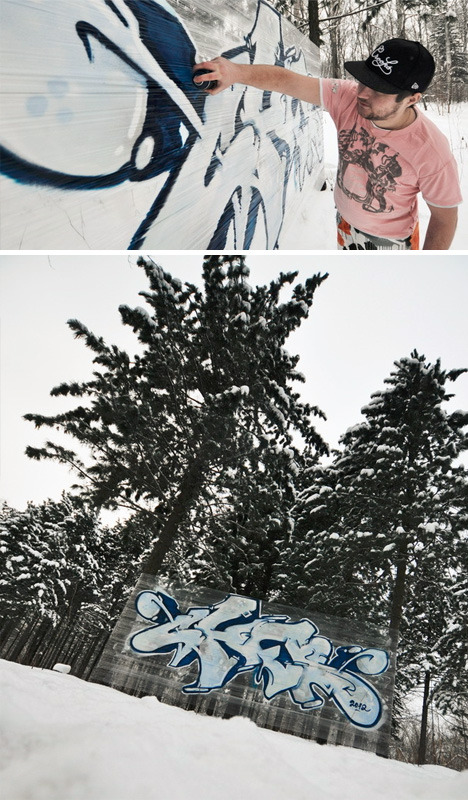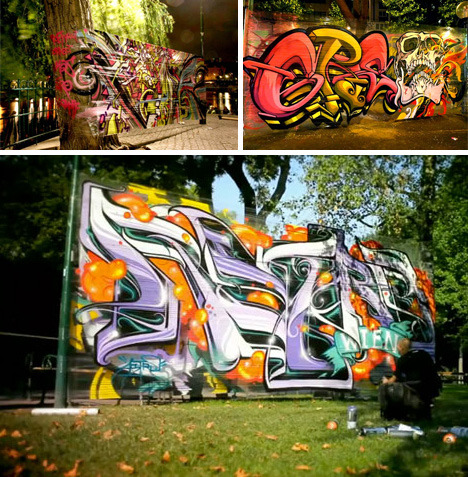Who says graffiti writers must always use walls in order to practice their art? According to My Modern Metropolis, a technique known as CelloGraff - using large pieces of cellophane stretched between two supports, such as trees or metal poles for example, was invented by two French graffiti artists named Astro and Kanos.
"By using cellophane, no damage is done to buildings or structures, and no laws are broken. This makes street art and the freedom to creatively express oneself easier to promote in a responsible way."
According to CelloGraff.com, back in 2006 Astro and Kanos were part of a French art collective called "Poetically Correct" along with two other artists named Reci and Xelecce:
"Together, they try to intervene in the city without any partial degradation nor dissimulation of visual signs. They turn then quickly towards Cellophane, various street stuffs to create new supports of expression."
Web Urbanist shared a few more examples of CelloGraff artistry. The third and fourth images above show a Russian writer named Ches getting up in the middle of a snowy forest outside of Moscow.
"Suddenly, rural settings (sans buildings) are fair game – mountains and forests can become backdrops for spray-painted expression. The translucent nature of the plastic 'canvas' employed adds a fascinating layer of visual complexity…"
Temporary stretched plastic installations like these cab be erected just about anywhere, creating wonderful opportunities to make cities and rural areas more vibrant and colourful. Visit CelloGraff to learn and see more.
Top image: Vulture painted by Fat Heat in Budapest at "Akvárium", 2012
[via My Modern Metropolis, Web Urbanist and CelloGraff]
http://scaolferios.tumblr.com/post/56980778752/archiemcphee-who-says-graffiti-writers-must





No hay comentarios:
Publicar un comentario